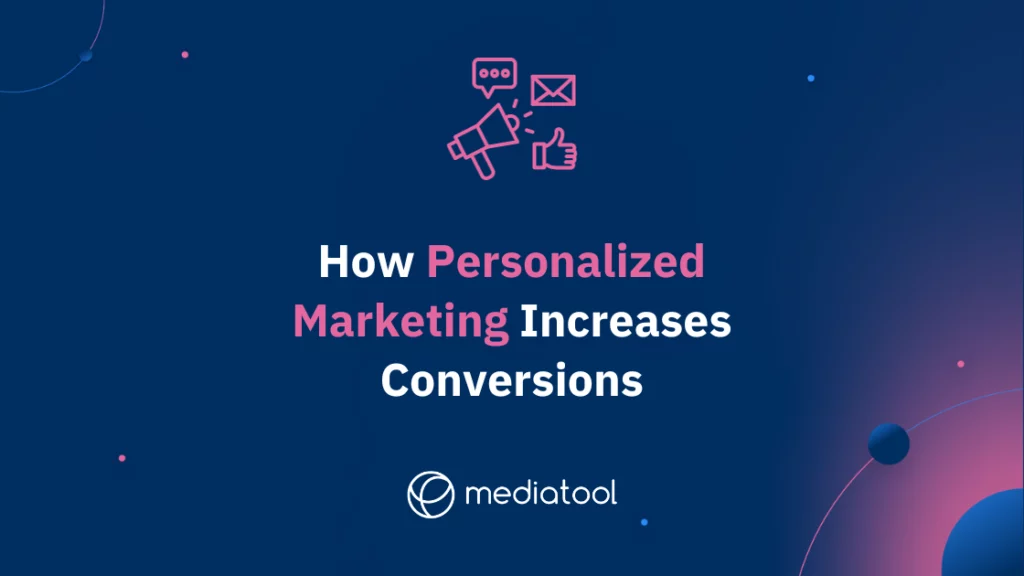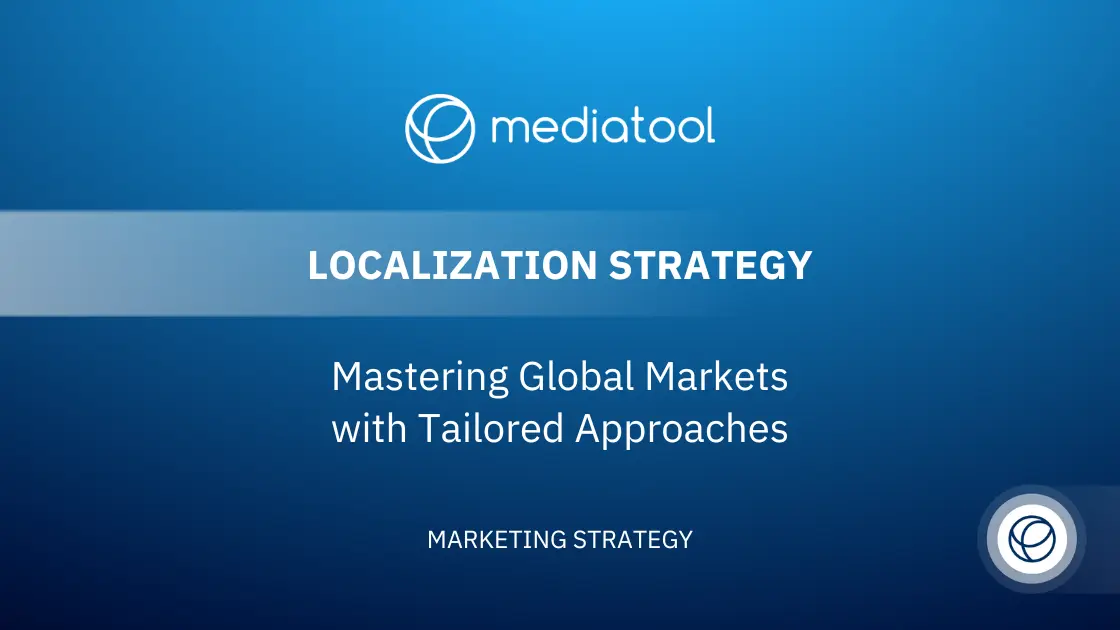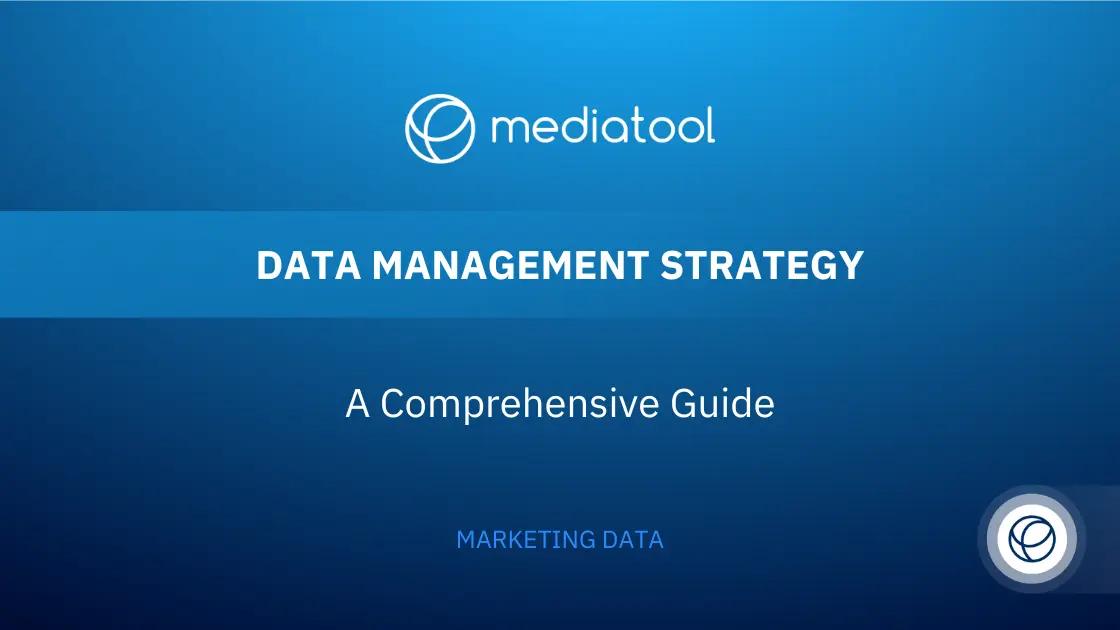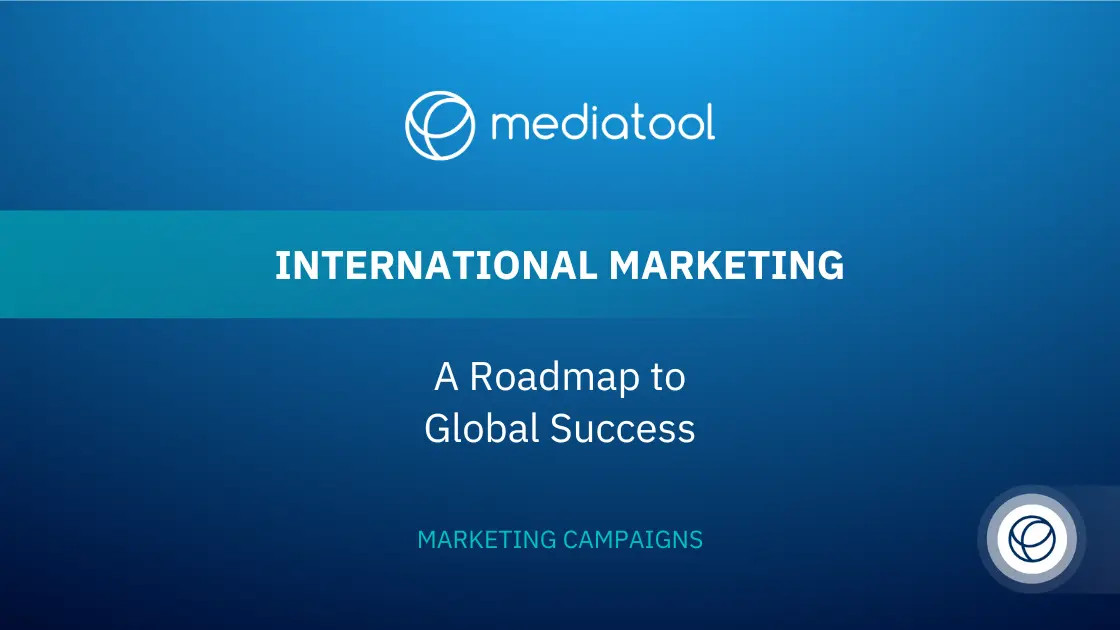Practical marketing personalization tools and techniques to bring in more business
We’ve known for years that personalized content performs better than generic marketing. Almost every email is personalized, and website widgets with titles like Recommended For You or You Might Also Like… are familiar.
As consumers, we’re surrounded by personalization in digital marketing. But take a second look, and you might be surprised to discover just how pervasive personalized marketing has become.
- 91% of customers were more likely to shop with brands that provide relevant offers and recommendations (Accenture)
- 65% of US and UK internet users at least occasionally shopped using product recommendations (Statista)
- 70% of consumers said one-to-one was the ideal level of website personalization (CMO by Adobe)
- 62% of shoppers said recommendations were important when deciding which brand to buy from (Google)
- 90% of leading marketers said marketing personalization significantly contributed to profitability (Google)
These marketing personalization statistics only lead to one conclusion. Personalization is essential. Customers (B2C and B2B) expect a personalized experience and are willing to pay for it.
And here’s the good news: it’s easier to personalize digital marketing than you might think. You need good-quality data, a robust MarTech stack, and a personalization strategy that prioritizes the customer experience.
What is Personalized Marketing?
Personalized marketing, also known as one-to-one marketing or individual marketing, is a strategy that leverages data analysis and digital technology to deliver individualized messages and product offerings to current or prospective customers.
This approach moves beyond traditional segmentation, focusing on truly personalized experiences based on customer data like purchase history, browsing behavior, and personal preferences.
The goal is to engage customers by communicating with them as individuals, providing relevant content and offers that resonate with their specific needs and interests.
Key aspects of personalized marketing include:
Customized Communication: Tailoring messages through personalized emails, social media posts, or custom video messages, ensuring that the brand message speaks directly to the consumer.
Behavior-Based Content: Utilizing past behavior and purchase history to predict future needs and preferences.
Advanced Customer Segmentation: Creating detailed buyer personas and segmenting the audience not just demographically, but based on behavior and preferences.
Integrating Technology: Using marketing technology, like customer relationship management software and customer data platforms, to gather, analyze, and apply consumer data effectively.
2. Why is Personalized Marketing Important?
The significance of personalized marketing experiences lies in its impact on customer engagement, satisfaction, and loyalty. It’s not just a trendy marketing strategy; it’s a pivotal element in modern marketing efforts due to several reasons:
Increased Customer Loyalty and Retention: Personalized interactions foster a deeper connection with customers, leading to increased customer loyalty and retention.
Higher Conversion Rates: Personalized marketing campaigns are more likely to resonate with customers, leading to higher conversion rates.
Improved Customer Experience: Delivering personalized experiences shows customers that a brand understands and values their individual needs, significantly improving the overall customer experience.
Efficient Marketing Spend: By targeting individuals with relevant content, businesses can allocate their marketing spend more effectively, reducing waste on less effective generic advertising.
Competitive Advantage: In a market saturated with generic advertising, personalized marketing helps brands stand out and connect more deeply with their audience.
3. Marketing Personalization Trends
Keeping up with the latest trends in marketing personalization is crucial for businesses looking to stay ahead. Some of the current trends include:
Machine Learning and AI: Leveraging advanced algorithms and machine learning to predict customer behavior and automate personalized marketing efforts.
Integration of Multiple Channels: Utilizing a mix of channels (email, social media platforms, mobile apps) to create a cohesive and personalized customer journey.
Account-Based Marketing: For B2B marketers, focusing on specific accounts with personalized strategies is becoming increasingly important.
Location-Based Marketing: Using location data to provide personalized marketing messages, particularly in retail and service-based industries.
Voice and Visual Search: Adapting marketing strategies to align with the rise of voice search and visual search technologies.
Data Privacy and Ethics: Balancing personalization efforts with consumer concerns about privacy and data security.
Personalized marketing is a powerful approach that, when executed correctly, can lead to more meaningful customer relationships, higher conversion rates, and increased brand loyalty.
However, it requires a strategic balance of technology, data analysis, and creative marketing tactics, always keeping the customer’s preferences and privacy at the forefront.
Examples of Personalized Marketing
- First name in subject line
- First name in email body
- Behavior-based journeys
- Personalized CTA
- Changing content based on device type
- Content blocks based on browsing/purchase history
- Changing delivery time based on time zone
Personalizing email content can increase open rates to 18.8% and click rates to 2.2%. However, contrary to what you might think, personalizing the content, not the subject line, yields the best results.
Website
- Recommended content
- Product recommendations
- Welcoming first-time visitors
- Remembering repeat visitors
- Quick-fill forms
- Changing content based on location or language
- Customer portal with service, product and support information
- Automatically applying discounts
More than 50% of consumers are interested in personalized recommendations when they shop online. They’re happy to exchange personal data for a tailored experience if they save time, get a discount, or find the right product.
Mobile
- Mobile-first website
- Notifications related to purchase history
- Service alerts
- Text message reminders
- App linked to online store
- Easily accessible loyalty program
- Personalized app layout or features
According to Google and Ipsos, 58% of smartphone users responded well to companies whose apps or mobile sites remembered them. More than half (51%) were likely to use an app that offered reward points.
It pays to link apps and websites. We’ll talk more about personalizing digital marketing for mobile users shortly.
eCommerce
- Abandoned cart emails
- Tailored product recommendations
- After-sales support emails
- “Customers also liked” recommendations
- Automated loyalty programs
- Wish lists
- Follow-up emails with relevant content only
Personalization is arguably most visible in eCommerce. Retailers who offer tailored experiences win big, receiving 20% higher NPS scores and encouraging 40% of shoppers to spend more than planned.
- 53% of customers wanted loyalty programs to activate at the checkout automatically
- 49% wanted recommendations based on their purchase history
- 44% wanted a wish list to save items for later
Customers are vocal about their preferences. And yet, on average, retailers only invest 0.7% of their revenue in personalization.
The cost of poor personalized marketing
There’s a big difference between personalized marketing and the right personalized marketing.
The email statistics above are a prime example. Personalized subject lines performed worse than personalized content – and addressing the reader in both places was significantly worse than not using their name at all.
With the range of personalized marketing tools available today, it’s easier than ever to track online audiences.
But they might not want that.
Audiences respond well when their needs are understood and anticipated, not when they feel stalked. For B2C and B2B marketers alike, getting the balance right requires an authentically customer-centric personalization strategy.
How to Create a Successful Personalized Marketing Strategy
Creating a successful personalized marketing strategy requires a deep understanding of your audience and the effective use of technology and data.
Here are steps and key considerations to build a powerful personalized marketing strategy:
1. Understand Your Audience:
Create Detailed Buyer Personas: Develop comprehensive profiles of your target customers, considering their needs, preferences, and behaviors. This is the foundation for any personalized marketing effort.
Analyze Customer Data: Use customer data platforms and customer relationship management software to analyze data such as purchase history, browsing behavior, and past interactions. This helps in understanding the average consumer’s needs and preferences.
2. Leverage Technology and Data:
Use Marketing Automation: Implement automation technology to deliver personalized content efficiently. This includes personalized emails, social media posts, and custom messaging.
Integrate Customer Relationship Management (CRM): A robust CRM system is pivotal in managing customer data and providing insights for personalized marketing efforts.
Data Collection and Analysis: Continuously collect and analyze consumer data, including third-party data, to refine your understanding of customer behaviors and preferences.
3. Personalize Across All Channels:
Email Marketing: Use personalized subject lines and content in emails to increase engagement. Remember, the goal is to provide a personalized experience, not just a personalized greeting.
Social Media Marketing: Tailor content on different social media platforms to resonate with your audience. Use insights from social media networks to understand customer preferences and trends.
Website and Mobile Experience: Personalize the user experience on your website and mobile app, from personalized product recommendations to custom video messages.
4. Focus on Customer Journeys:
Map Customer Journeys: Understand the different stages of the customer journey and identify opportunities for personalization. This includes everything from lead capture forms to post-purchase follow-ups.
Deliver Personalized Interactions: Create personalized campaigns that cater to the specific needs of customers at different stages of their journey.
5. Measure and Optimize:
Measure Personalized Marketing Efforts: Continuously track the impact of your personalized marketing campaigns to understand what resonates with your audience.
Optimize Based on Feedback and Data: Use customer feedback and behavioral data to refine your personalized marketing strategies.
6. Innovate and Stay Current:
Keep Up with Trends: Stay abreast of the latest trends in personalized marketing, such as location-based marketing, account-based marketing, and the use of AI and machine learning.
Adapt to Changing Consumer Expectations: Be flexible and adapt your strategy to meet the evolving expectations of your customers for a more personalized experience.
7. Ethical Considerations:
Respect Privacy and Data Security: Balance personalization efforts with respect for consumer privacy. Ensure compliance with data protection regulations.
Avoid Over-Personalization: Personalization should enhance the customer experience, not make them feel uncomfortable or watched.
By incorporating these elements into your marketing strategy, you can effectively engage existing customers, attract new ones, and enhance overall customer satisfaction.
Successful personalized marketing strategies are those that deliver relevant and timely content to customers, creating a personalized marketing impact that drives customer loyalty and retention.
Marketing personalization tools you can add to your toolkit
Tailoring the audience experience builds trust and removes barriers, which 90% of marketers say contributes to higher profits. So, where do you start? And how do you ensure you’re offering the right experience rather than creeping out your audience?
Personalization strategy
Go back to the drawing board and create a customer-centric personalization strategy. Send out surveys, ask your audience, and analyze available data to determine what they find valuable. Use that information to direct your next campaign.
Customer-centric personalization in digital marketing means organizing around your audience, not trying to herd them into an inflexible funnel. Tailoring experiences to the customer results in higher conversions, greater brand loyalty and more word-of-mouth referrals.
Gathering data
Data is a marketer’s most valuable asset. It quantifies anecdotal feedback and surfaces insights about behavior that might be unconscious to customers.
As we transition to a world without third-party cookies, focus on collecting and using first-party data:
- Purchase history
- Preferences and filters
- Form data
- Website interactions (browsing history)
- Cross-channel user journeys
- Social media interactions
- Email opens and clicks
- CRM data
Augmenting first-party data with third-party data enables you to segment audiences more accurately and offer personalization at scale. In other words, use what you know to get closer to your audience.
The first step to data-driven intelligence is bringing all your digital marketing together in a centralized hub like Mediatool.
Listen to your audience
Personalized digital marketing is not set-and-forget. Monitor the results closely to figure out which tactics are working and which need refinement.
For example, A/B test personalized content in emails to see whether your audience prefers to see their name in the body or subject line. Or, if you sell a product or service that requires follow-ups (many B2B offerings), test reminder tactics and cadences to understand how, where and when customers expect to hear from you.
Mediatool gives marketers real-time access to data from virtually every marketing channel. Teams can create reports in a few clicks, track progress toward targets, and filter marketing data to see which tactics are delivering results.
Deliver all-in-one campaign management with Mediatool
Mediatool is the all-in-one campaign management platform for agencies and brand teams who appreciate the power of data. Explore the platform or schedule a hands-on demonstration.




